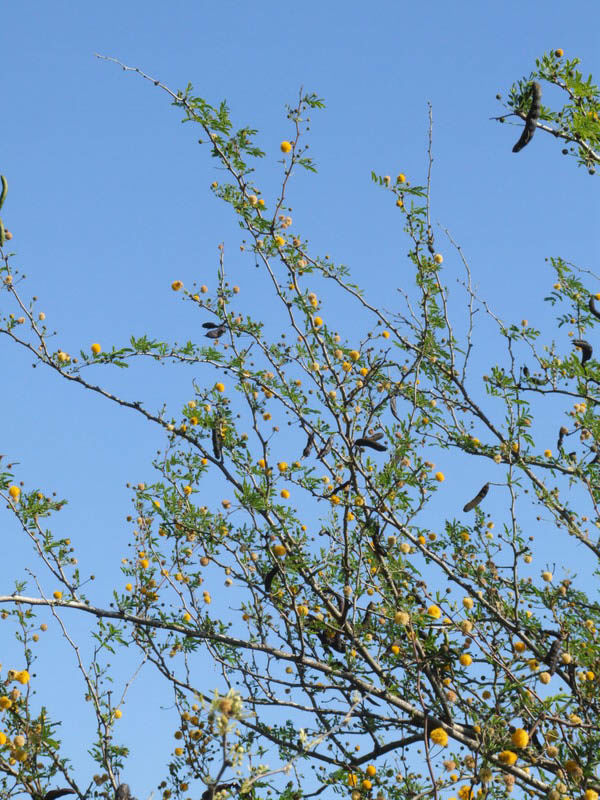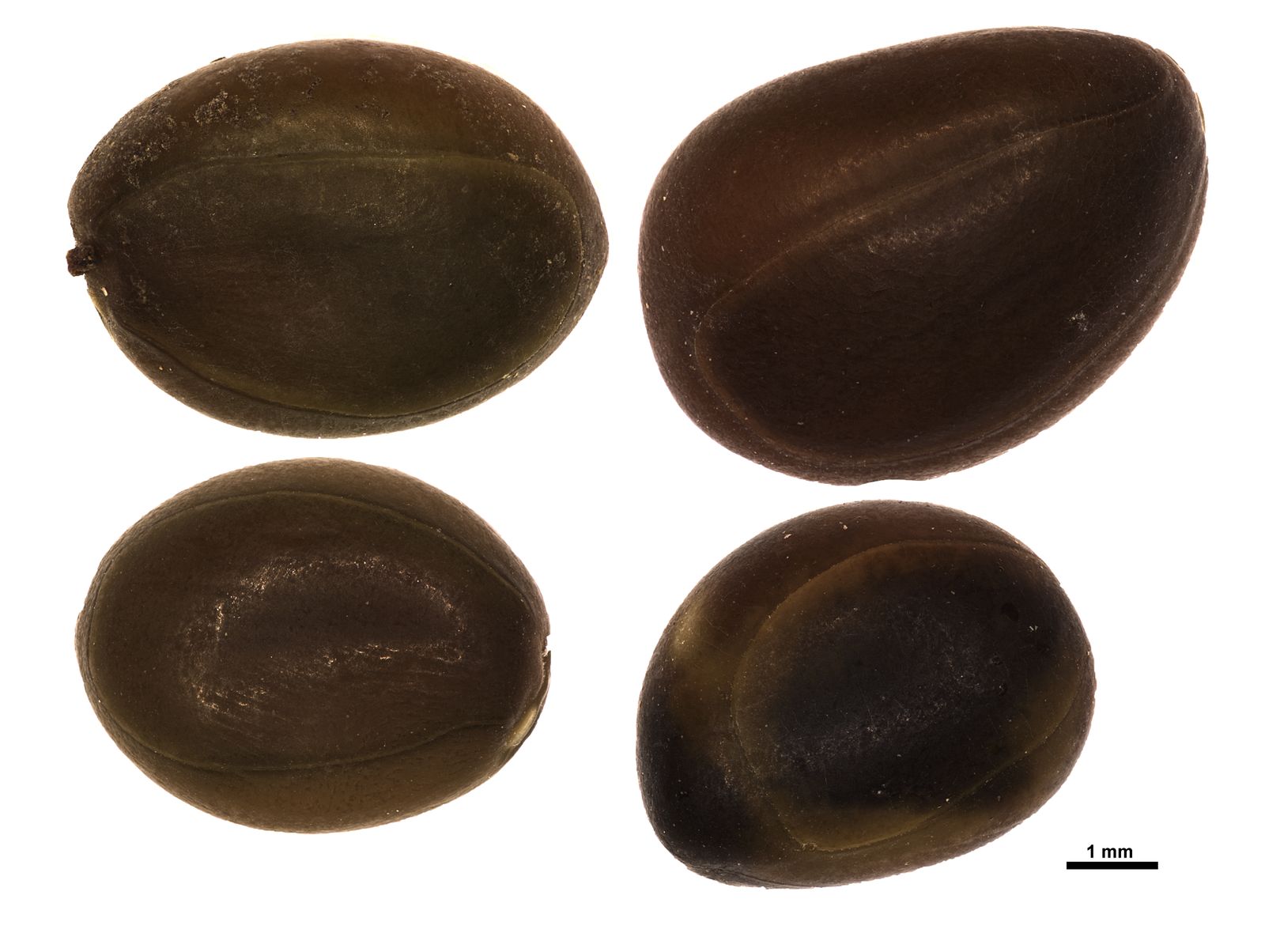Honey Acacia, Needle Bush, Mimosa
vachellia farnesiana
Also known as: ["Honey Acacia","Mimosa"," Needle Bush"]
Overview
A small deciduous tree or shrub native to the Americas, known for its fragrant yellow flowers and thorny branches.
Benefits & Perks
["fragrant flowers","wildlife attractant (bees, butterflies, birds)","drought tolerant"]
Botanical Classification
| Phylum: | Magnoliophyta |
| Class: | Magnoliopsida |
| Order: | Fabales |
| Family: | Fabaceae |
| Genus: | Vachellia |
| Botanical Name: | Vachellia farnesiana |
Plant Characteristics
Basic Information
- Category: Trees
- Suitable Location: outdoor garden in full sun, tolerates poor soil conditions
- Suitable For:
- Is Weed: No
- Allergenicity: low
Environmental Needs
- Climate: {"temperatureRange":"5–45°C"}
- Hardiness: {"zones":"8–11"}
- Misting: rarely required, only in very dry indoor conditions
- Drainage: Fast-draining to prevent root rot.
- Soil Type: Well-draining, sandy or loamy soil with some organic matter.
Maintenance Level
- Maintenance Level: moderate
- Toughness Level: high
- Pruning Frequency: Annually in late winter or early spring before new growth begins.
- Pruning Intensity: Moderate; remove up to one-third of old growth if needed.
Care Details
Ideal Sunlight Coverage:
Full sun (6–8 hours of direct sunlight daily); tolerates intense summer sun but benefits from partial shade in extreme heat.
Sunlight Tolerance Tips:
Acclimate plants gradually to intense sunlight; protect from harsh afternoon sun in hot climates; adjust placement based on seasonal light intensity.
Care Requirements
Care Difficulty
moderatemoderate
Sunlight
full sun
Full sun is essential; rotate plant for even growth; provide shade during peak summer heat if needed.
Watering
every 2–3 weeks during dry periods, less frequently in winter
Water thoroughly but infrequently; ensure soil dries out between waterings; avoid overwatering, especially in winter.
Soil
well-drained, sandy or loamy soil
pH: Slightly acidic to neutral (pH 6.0–7.5).
Use sandy soil mix; ensure pots have drainage holes; avoid heavy clay soils.
Temperature
Thrives in warm conditions (65–95°F or 18–35°C); tolerates mild frosts but prefers frost-free environments.
Protect from frost; ensure good air circulation in heat; adjust watering by temperature.
Fertilizing
rarely needed, annually with slow-release fertilizer if soil is poor
Fertilize only during active growth; use a balanced formula; avoid over-fertilizing, which can harm roots.
Propagation
Methods
Stem cuttings or seed; stem cuttings root readily in warm conditions.
Step-by-Step Propagation Guide
- Take 4–6 inch cuttings.
- Remove lower leaves.
- Dip in rooting hormone.
- Plant in medium.
- Keep moist and warm.
Best Time: Spring or early summer when temperatures are warm and humidity is moderate.
Environment
Warm (75–85°F or 24–29°C), humid, and bright but indirect light.
Medium
Well-draining mix of perlite and peat moss or cactus mix.
Hormone
Rooting hormone is recommended for faster and more reliable rooting.
Timeline
Roots typically form in 4–8 weeks; plants may take several months to establish.
Tools Needed
Pruning shears, rooting hormone, small pots, well-draining medium.
Quick Tips
Use fresh cuttings; maintain humidity with a plastic cover; ensure bottom heat for faster rooting.
Pruning & Repotting
Pruning Guide
Method
Selective thinning and heading back to promote branching.
Pruning Plan
Prune to maintain shape, encourage bushiness, and remove dead or diseased wood.
Tools
Pruning shears, loppers, gloves, disinfectant.
Checklist
Disinfect tools; prune dead/diseased wood first; make clean cuts; avoid over-pruning.
Repotting Guide
Best Season
Early spring before active growth starts.
Pot Size
One size larger pot (e.g., +2 inches in diameter); ensure good drainage.
Method
Remove plant gently; trim roots if crowded; place in slightly larger pot with fresh soil; water lightly.
Suggestions
Repot every 2–3 years or when roots fill the pot; beneficial for container-grown plants to refresh soil.
Checklist
Choose appropriate pot size; use fresh soil mix; trim roots if necessary; water after repotting.
Advanced Care Tips
Watering Mastery
Watering Checklist
Check soil moisture before watering; water deeply at root zone; ensure proper drainage; adjust frequency by season.
How to Apply Water Properly
Water directly at the root zone until water drains from the bottom; ensure even moisture penetration to root depth; water early in the morning or late in the evening to minimize evaporation.
Watering Schedule Tips
Water deeply once every 1–2 weeks during active growth in spring and summer; reduce frequency to once a month or less in fall and winter, allowing soil to dry completely between waterings.
Soil Improvement
Add perlite or coarse sand for drainage; incorporate compost for fertility; ensure good aeration.
Temperature Stress Management
Signs of Temperature Issues
Chlorosis or leaf drop in cold stress; wilting or scorching in excessive heat.
Cold Stress
Growth slows or halts; leaves may yellow or drop; prolonged cold can cause dieback.
Solution: Protect from frost with mulch or frost cloth; move potted plants indoors during freezes; avoid overwatering in cold conditions.
Hot Stress
Leaves may wilt, scorch, or drop; growth may slow; soil may dry out rapidly.
Solution: Provide afternoon shade if possible; increase watering frequency; use mulch to retain soil moisture.
Fertilizing Guide
Fertilizing Checklist
Use balanced fertilizer; apply in spring; follow package instructions; avoid winter feeding.
Fertilizing Method
Use a balanced, slow-release fertilizer in spring; avoid frequent feeding; reduce or stop fertilizing in fall and winter.
Common Problems & Solutions
Toxicity Warning
Cats
Slightly ToxicCats may suffer mild gastrointestinal issues if they consume the seeds or pods of Vachellia farnesiana. The plant poses a low risk, but ingestion should be prevented to avoid any adverse effects.
⚠️ Symptoms:
🌿 Toxic Parts:
⚡ Toxic If:
if eaten
Dogs
Slightly ToxicDogs may experience mild gastrointestinal upset if they ingest the seeds or pods of Vachellia farnesiana. The plant is not highly toxic, but ingestion should be avoided to prevent discomfort.
⚠️ Symptoms:
🌿 Toxic Parts:
⚡ Toxic If:
if eaten
Humans
Slightly ToxicThe seeds and pods of Vachellia farnesiana contain compounds that can cause mild gastrointestinal distress when ingested in significant quantities. The plant is generally considered non-toxic, but caution is advised due to potential mild effects.
⚠️ Symptoms:
🌿 Toxic Parts:
⚡ Toxic If:
if eaten
Frequently Asked Questions
Q: Is Vachellia farnesiana toxic to pets?
A: There is no reliable information available regarding its toxicity to pets.
Q: How often should I water Vachellia farnesiana?
A: Water sparingly, as it is drought-tolerant and prefers well-drained soil.
Q: Does Vachellia farnesiana attract wildlife?
A: Yes, it is known to attract bees, butterflies, and birds due to its fragrant flowers.
Quick Reference
| Family: | Fabaceae |
| Care: | moderate |
| Light: | full sun |
| Water: | every 2–3 weeks during dry p |
Get Expert Care Tips
Download the Plantious app for personalized care reminders and plant identification!
Google Play App Store







